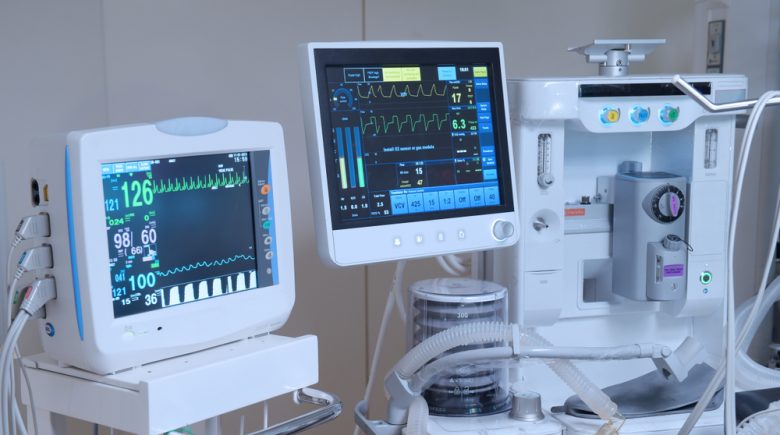Statistics in the United States indicate that some of the medical startups only operate for a maximum of five years after which they close down. More than 30% of medical startups fail to continue with their operations because they lack the necessary medical equipment to serve their clients. It is generally accepted across the industry that the initial cost of medical equipment is too high for startups.
Therefore, if you intend to start a medical startup, you must have advanced medical equipment to serve your clients. But how do you meet the initial cost of inflated medical tools and equipment without sufficient funds? You can consider leasing, which is an agreement between lessor and lessee were the lessee gets equipment without paying upfront cost but is required to pay agreed monthly lease amounts. Some of the benefits of leasing medical equipment have been discussed below.
1. Up to 100% Financing
The ultimate problem facing medical startups is that they cannot pay all the initial costs required to purchase most of the medical equipment. However, in a lease agreement, the equipment manufacturer or lessor may allow your business to get the equipment without paying a single cent. Some companies will not even require you to pay down payment. A lease agreement that does not require your business to pay down payment or other administrative expenses amounts to 100% asset financing.
2. Off-Balance Sheet Financing
A lease agreement does not require you to withdraw funds from your bank account, which would have significantly effects on the health of your balance sheet. It is funded by external programs that don’t affect the operational capital of the business. Later, you can capture the asset in your balance sheet, which improves financial ratios and asset ratios. Therefore, leasing is a financial strategy for enhancing the attractiveness of your financial statements.
3. Flexible Monthly Lease Payments
Although you will be required to pay monthly lease payments, you can agree with the leasing company to pay on flexible terms. For example, you can pay for three months or a single month depending on the agreement. However, you will find that monthly lease agreement is affordable and you don’t need any incentives. You also have an option of comparing leasing companies so that you can choose a company that has the lowest monthly lease payments.
4. Tax Benefits
Every company will be attracted to a legal opportunity that allows it to minimize annual tax obligations. Lease agreements give organizations a chance to reduce their tax expense. Operating lease payments or the monthly lease payments are considered tax deductibles when recorded on financial statements as operating expenses. You can liaise with your financial advisor and determine how to capture lease expenses as financial expenses that are tax deductibles according to International Accounting Standards.
5. Hedging against Obsolesce
Innovation continues and there is no doubt new medical equipment will soon be in the industry. You don’t want to tie yourself in a financial program that requires you to stay with medical equipment for ten years. Get into an agreement of three years after which you can look for advanced equipment that can offer advanced services efficiently. Short lease agreements allow you to hedge against obsolescence and remain attractive in the medical industry.
6. Avoiding Depreciation Expenses
Traditionally, the lessee is not required to meet the depreciation expenses of the equipment under consideration. Your landlord will bear the cost of depreciation throughout the entire lease period. If you have bought your medical equipment, you will be incurring depreciation expenses annually, which, together with provision for depreciation, affects your cash balances and cash statement. However, it is essential to highlight that you will be required to pay repair and maintenance expenses incurred through negligence.
7. Fixed Interest Rates
Monthly lease agreements are paid on fixed interest rates. This means that you can quickly determine the cash outflow in your medical facility. Therefore, you can project your financial income in the future by comparing the cash generated by the equipment and the interest rates you are paying to the lessor and determine whether the entire lease program is viable. In circumstances where the lease program is not feasible, you can terminate the agreement, albeit at a small cost.
8. Easy to Upgrade Equipment
Sometimes you may feel that you need to upgrade or replace your existing equipment without cancelling the lease program. You will only be required to inform, in writing, the lessor of your interests. The equipment manufacturer will only adjust the monthly payment and give you advanced medical equipment without incurring substantial upfront costs. This is a strategic plan that can help startup pharmaceutical companies to remain relevant with limited cash balances.
9. Let the Equipment Meet its Expenses
Instead of writing a check every month and giving your lessor to withdraw money from your savings, how about allowing the equipment to meet its expenses? All you need to do is to take a proportion of the income generated by the equipment and pay monthly lease agreement. This strategy will not affect other finances in the company. In the long term, you will incur zero expenses because the equipment will cater for all the lease expenses.
10. Fix Short Term Needs
A medical facility may be required to fix a medical issue that is not based on its primary line of operations. Therefore, instead of buying medical equipment that will serve the facility for two months and stay idle for the rest of its life, it would be necessary to consider a lease agreement. This is a strategy that will require the company to fix the emergencies with advanced equipment and pay lease amounts for two months only instead of paying for thousands of dollars for equipment that will not pay back its value.
As you can see, you have an opportunity to save your medical startup from being like other medical startups that meet the fate of small business organizations that don’t live to see their fifth birthday. Leasing is a cost-effective strategy that allows your business to have advanced medical equipment with manageable expenses. However, before agreeing on any leasing program, it is crucial to analyze the prevailing circumstances of the lease to avoid unreasonable financial obligations.
Statistics in the United States indicate that some of the medical startups only operate for a maximum of five years after which they close down. More than 30% of medical startups fail to continue with their operations because they lack the necessary medical equipment to serve their clients. It is generally accepted across the industry that the initial cost of medical equipment is too high for startups.
Therefore, if you intend to start a medical startup, you must have advanced medical equipment to serve your clients. But how do you meet the initial cost of inflated medical tools and equipment without sufficient funds? You can consider leasing, which is an agreement between lessor and lessee were the lessee gets equipment without paying upfront cost but is required to pay agreed monthly lease amounts. Some of the benefits of leasing medical equipment have been discussed below.
1. Up to 100% Financing
The ultimate problem facing medical startups is that they cannot pay all the initial costs required to purchase most of the medical equipment. However, in a lease agreement, the equipment manufacturer or lessor may allow your business to get the equipment without paying a single cent. Some companies will not even require you to pay down payment. A lease agreement that does not require your business to pay down payment or other administrative expenses amounts to 100% asset financing.
2. Off-Balance Sheet Financing
A lease agreement does not require you to withdraw funds from your bank account, which would have significantly effects on the health of your balance sheet. It is funded by external programs that don’t affect the operational capital of the business. Later, you can capture the asset in your balance sheet, which improves financial ratios and asset ratios. Therefore, leasing is a financial strategy for enhancing the attractiveness of your financial statements.
3. Flexible Monthly Lease Payments
Although you will be required to pay monthly lease payments, you can agree with the leasing company to pay on flexible terms. For example, you can pay for three months or a single month depending on the agreement. However, you will find that monthly lease agreement is affordable and you don’t need any incentives. You also have an option of comparing leasing companies so that you can choose a company that has the lowest monthly lease payments.
4. Tax Benefits
Every company will be attracted to a legal opportunity that allows it to minimize annual tax obligations. Lease agreements give organizations a chance to reduce their tax expense. Operating lease payments or the monthly lease payments are considered tax deductibles when recorded on financial statements as operating expenses. You can liaise with your financial advisor and determine how to capture lease expenses as financial expenses that are tax deductibles according to International Accounting Standards.
5. Hedging against Obsolesce
Innovation continues and there is no doubt new medical equipment will soon be in the industry. You don’t want to tie yourself in a financial program that requires you to stay with medical equipment for ten years. Get into an agreement of three years after which you can look for advanced equipment that can offer advanced services efficiently. Short lease agreements allow you to hedge against obsolescence and remain attractive in the medical industry.
6. Avoiding Depreciation Expenses
Traditionally, the lessee is not required to meet the depreciation expenses of the equipment under consideration. Your landlord will bear the cost of depreciation throughout the entire lease period. If you have bought your medical equipment, you will be incurring depreciation expenses annually, which, together with provision for depreciation, affects your cash balances and cash statement. However, it is essential to highlight that you will be required to pay repair and maintenance expenses incurred through negligence.
7. Fixed Interest Rates
Monthly lease agreements are paid on fixed interest rates. This means that you can quickly determine the cash outflow in your medical facility. Therefore, you can project your financial income in the future by comparing the cash generated by the equipment and the interest rates you are paying to the lessor and determine whether the entire lease program is viable. In circumstances where the lease program is not feasible, you can terminate the agreement, albeit at a small cost.
8. Easy to Upgrade Equipment
Sometimes you may feel that you need to upgrade or replace your existing equipment without cancelling the lease program. You will only be required to inform, in writing, the lessor of your interests. The equipment manufacturer will only adjust the monthly payment and give you advanced medical equipment without incurring substantial upfront costs. This is a strategic plan that can help startup pharmaceutical companies to remain relevant with limited cash balances.
9. Let the Equipment Meet its Expenses
Instead of writing a check every month and giving your lessor to withdraw money from your savings, how about allowing the equipment to meet its expenses? All you need to do is to take a proportion of the income generated by the equipment and pay monthly lease agreement. This strategy will not affect other finances in the company. In the long term, you will incur zero expenses because the equipment will cater for all the lease expenses.
10. Fix Short Term Needs
A medical facility may be required to fix a medical issue that is not based on its primary line of operations. Therefore, instead of buying medical equipment that will serve the facility for two months and stay idle for the rest of its life, it would be necessary to consider a lease agreement. This is a strategy that will require the company to fix the emergencies with advanced equipment and pay lease amounts for two months only instead of paying for thousands of dollars for equipment that will not pay back its value.
As you can see, you have an opportunity to save your medical startup from being like other medical startups that meet the fate of small business organizations that don’t live to see their fifth birthday. Leasing is a cost-effective strategy that allows your business to have advanced medical equipment with manageable expenses. However, before agreeing on any leasing program, it is crucial to analyze the prevailing circumstances of the lease to avoid unreasonable financial obligations.



